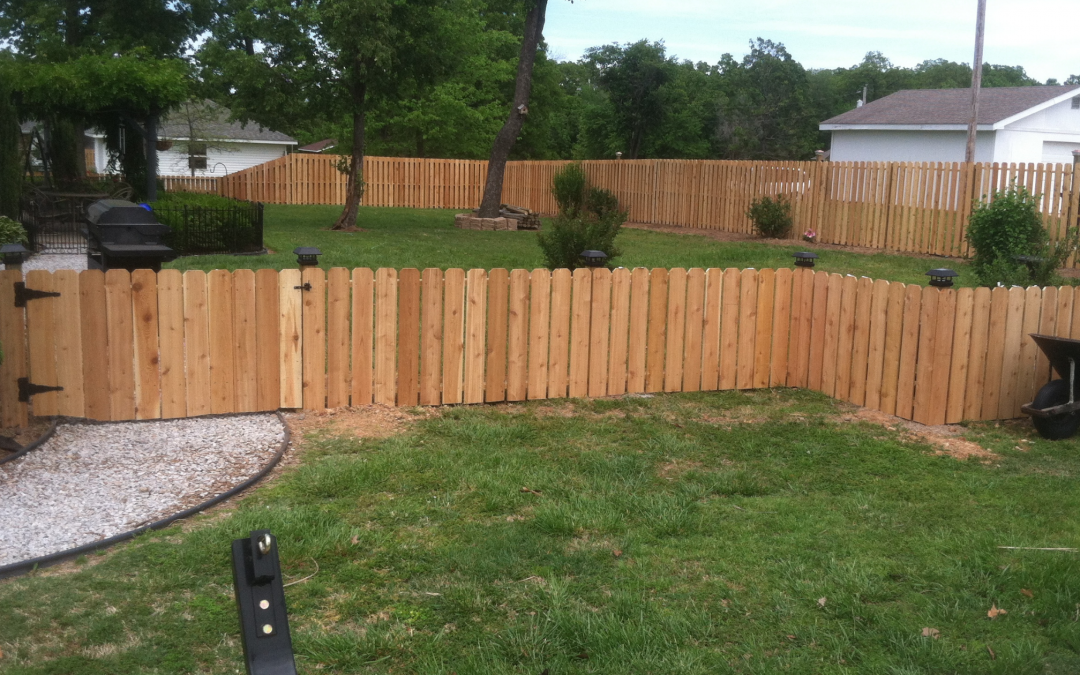A fence can improve your home’s curb appeal, provide security, increase privacy, and offer protection from the elements. But before you start building a fence, there are a few things you should know first. Here are our top tips for planning, designing, and building a fence for your home.
Know What You Want
Before you install a fence, ask yourself what your reason is for installing it. If it’s strictly utilitarian—keeping the dog in the yard—you can probably get by with a basic chain-link fence. If you’re looking to block noise or add privacy, you will want something tall and solid. Chances are your wishes are complex: You want to protect pets, but you also want to add a decorative element to your home’s exterior. Whatever its purpose, a fence can function in many ways, but the first step is deciding what you’re looking for to choose one that works for you.
Face Your Fence the Right Way
If you’re building a privacy fence, make sure you know which way a wooden fence should face. The smooth, finished side of the fence should face the neighbor. The side with the rails and posts showing should be on the inside. This is the standard way to build a backyard fence. Not only will your property look nicer this way but your neighbor will appreciate your attention to detail.
Consider Fence Materials
A white picket fence is quintessential, but before you buy wood posts and whitewash, think about the commitment you’re making. Wood fences might require occasional staining or sealing and can warp and rot over time. Consider a low-maintenance material, such as vinyl, that offers the look of wood without the elbow grease. Other material options include aluminum, steel, wrought iron, and bamboo.
Mix Fencing Types
If cost is an issue, mix different types of fences. Wood picket fencing could be placed at the front of the home, for example, connecting to chain link fencing in the back. Not only will this combination fence potentially save installation costs, but it also will reduce the amount of fence that might require repainting. Mixing fencing materials and styles also adds interest to the landscape.
Think Green
Landscaping can be used to protect your home from weather and views and to mark property lines. Layer plantings to form pockets where others can’t see your house or another part of the yard. Remember, local building codes and neighborhood fence rules may cover such living walls. Additionally, you’ll need to ensure that planted materials don’t overgrow such restrictions in the future.
Research the Property Line
You need to know where to put a fence. To make sure that you accurately build your fence on your own property and not partially on your neighbor’s land, get your property surveyed. A property survey is a document created by a surveyor that establishes a property’s boundaries and rights of way. If you’ve lost your property survey, you may be able to get it from your county’s records office.
Hire Professionals
Fence installation is harder than it looks, but DeGraff Construction makes it easy. Click here to see examples of fences we have installed.
Be a Good Neighbor
Be open and upfront with neighbors about your fencing plans. Try not to unnecessarily block their views. A party fence can be built and shared by two or more neighbors, but such agreements should be made in writing and only after the property boundaries have been professionally determined. Installing a good neighbor fence—a wood privacy fence where the finished side (the more attractive, smooth side) faces the neighbor’s property—is commonly considered good etiquette.
Consider Climate
In cold northern climates that experience frost, concrete anchors are necessary for fence posts. The post should be secured 36 inches deep to avoid cracking in a cold snap. For warmer, damper climates, vinyl is your best material choice, as wood is susceptible to water damage. In very cold climates, wood, bamboo, and metal fences are the most durable.
Create Entrances
For safety and convenience, plan at least two paths into a fenced area. Ensure that one of these is large enough to accommodate bulky outdoor equipment such as lawnmowers and large garbage cans. Stepping stones, pergolas, and other decorative elements can help indicate the locations of gates. A classic white picket fence paired with a matching arbor and gate makes a charming entrance to any yard.
Click here to get in touch with us!

